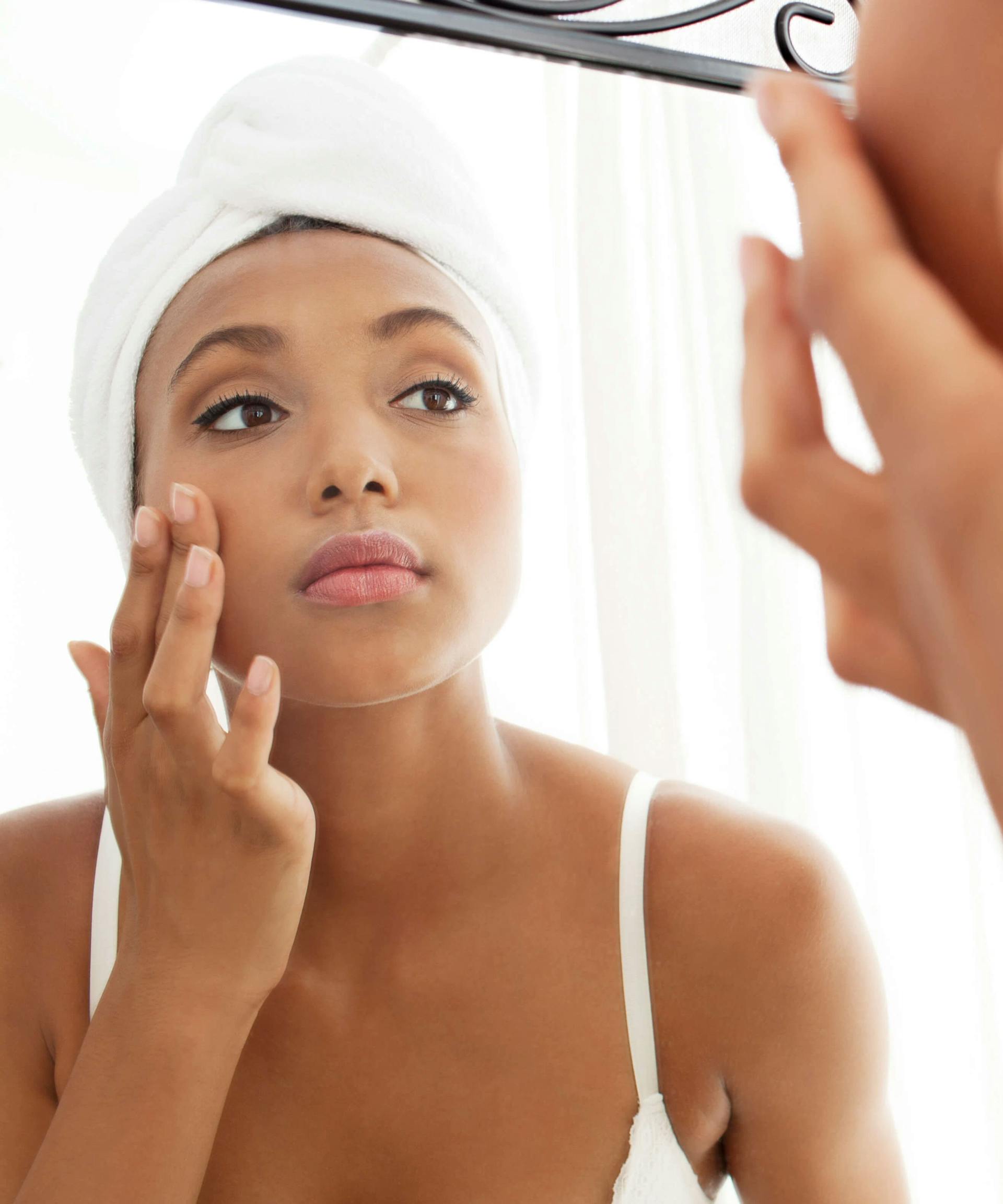Avoid These 13 Ingredients In Your Beauty Products For Greater Hormonal Health
As infertility rates continue to rise, it's important women understand how their modern lifestyle may be negatively affecting their hormones and fertility. Alongside eating a diet that supports hormonal health, it's also important we take a look at what we're putting on our skin. Unfortunately, some of the most hazardous chemicals that block hormones are found in makeup, moisturizers, and shampoo.

Some of these chemicals are endocrine-disrupting chemicals (EDCs) and regular exposure to these substances can lead to a variety of health problems. This is particularly concerning as a study found that women who use makeup absorb almost five pounds of chemicals into their bodies each year. Plus, as cosmetic products aren’t subject to FDA approval, it’s up to women to read labels and avoid harmful chemicals if they want to protect their hormones.
What Are Endocrine Disruptors?
The endocrine system is made up of hormones, organs, and glands, and is responsible for nearly every function in your body. When endocrine disruptors are introduced to the system, they can create a variety of problems.
Some endocrine-disrupting chemicals change the number of hormones in our blood while others change our sensitivity to hormones. Some can stop hormones from doing their job and others mimic the body’s natural hormones which can initiate a cell response at the wrong time or to an excessive extent.
Cosmetic products aren’t subject to FDA approval, so it’s up to us to check for hormone-disrupting ingredients.
If your hormones are unbalanced, this can lead to a wide variety of health problems, including weight gain, infertility issues, weak bones, and low energy, to name a few. This is why it’s important to take a look at what you’re putting on your skin. After all, anything your skin absorbs can enter your bloodstream, and as your skin is a way into your hormonal system, a detox of your beauty products may be just what you need to balance your hormones.
Avoid These 13 Ingredients in Your Beauty Products
Not only is your skin a way into the workings of your endocrine system, but it’s also a way into your internal organs of elimination, such as your liver, lymphatic systems, and large intestine. Alisa Vitti is a women's hormone and functional nutrition expert, a pioneer in female biohacking, and author of WomanCode. Here are the 13 ingredients she recommends avoiding for greater hormonal and overall health.
1. Aluminum Chloride
Found in: Antiperspirants
Issue(s): It can build up in the brain and has been linked to Alzheimer’s.
2. BHA/BHT
Found in: Packaged dry foods and skincare products made from petrochemicals
Issue(s): Benign and malignant tumors
3. Ethylene Glycol
Found in: Shampoos (also found in antifreeze)
Issue(s): Respiratory problems
4. Talc
Found in: Baby powder, eyeshadow, blush, and other cosmetics
Issue(s): May be linked to ovarian cancer, sometimes contaminated with asbestos.
5. Ammonium Xylenesulfonate
Found in: Nail polish
Issue(s): When inhaled, it can cause central nervous system damage and coma.
6. Ethanol
Found in: Perfumes, acne products, skin toners
Issue(s): If ingested, it can cause stupor, coma, nausea, and death.
7. Butyl Alcohol
Found in: Clear shampoos
Issue(s): Dizziness, drowsiness, headaches, dermatitis, and breathing problems
8. Lithium Chloride
Found in: Soap
Issue(s): Toxic to kidneys
9. PABA
Found in: Sunscreen
Issue(s): Skin rashes, swelling, and allergic eczema
10. Phenoxyethanol
Found in: Cosmetic products, soap, and perfumes
Issue(s): Derived from Phenols, which are highly irritating to the skin, eyes, and mucous membranes after acute inhalation or dermal exposures (absorbed into the body through the skin)
11. Diazolidinyl Urea/Disodium EDTA/DMDM Hydantoin
Found in: Used as a preservative in many cosmetic products
Issue(s): It’s made from formaldehyde, which is a known carcinogen.
12. Imidazolidinyl Urea/Urea
Found in: Used as a preservative in many cosmetic products
Issue(s): It’s synthesized from known carcinogens.
13. Poly Quaternium 7, 10, 11, 15
Found in: Hair conditioners, creams, lotions, and more
Issue(s): Skin irritant that combines with natural body substances and creates carcinogens called nitrosamines.
Although some of the above products have only been documented causing issues if ingested, it’s important to remember that whatever your skin absorbs can make it to your bloodstream. So, if you can’t ingest it, then it’s probably best to avoid putting it on your skin too.
Whatever your skin absorbs can make it to your bloodstream, so if you can’t ingest it, then it’s probably best to avoid putting it on your skin too.
Try the Think Dirty App
It may feel a little overwhelming scouring your beauty products to find any of the 13 ingredients above. Unless you work in skincare, the ingredients list on the back of beauty products can often read like another language. Thankfully, there’s an app to make it easier. The Think Dirty app provides an easy way to find out exactly what’s in your products. Simply scan the barcode and the app will provide a “clean” score out of 10 (10 being the worst), an ingredient list, and the information on all ingredients used.
Closing Thoughts
The best approach to using safe skincare would be to find a clean brand that you trust and check their ingredients on the Think Dirty app to be extra safe. To get you started, women’s hormone expert Alisa Vitti recommends using aloe vera gel as a moisturizer, or if you have dry skin, try the Raw Coconut Cream from RMS Beauty. She also recommends Naturopathica’s Pumpkin Enzyme Peel, Jane Iredale cosmetic products if you have oily skin, or RMS Beauty if you have dry skin. Find what works for you!
Love Evie? Let us know what you love and what else you want to see from us in the official Evie reader survey.